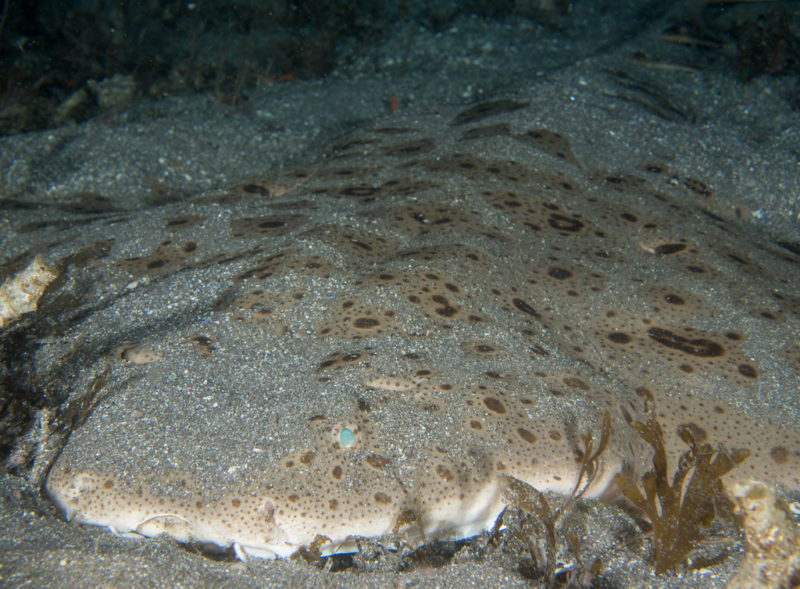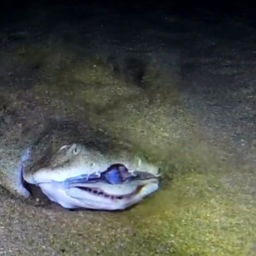Although angelsharks (squatina squatina) live around the world in temperate and tropical seas, it’s rare to see one on a dive — unless you’re in the Canary Islands, where it’s quite easy to spot one of these interesting creatures. Because of their flat bodies and broad pectoral fins, they resemble rays more than sharks.

“EP6D0354.jpg”by alwayslaurenj is licensed under CC BY-NC 2.0![]()
![]()
![]()
What do angelsharks look like?
Young angelsharks are gray while adults are more yellow in coloration. Both these attributes help the sharks camouflage in the shallow, sandy bottoms of the world’s oceans. With a flat, elongated body and vast pectoral fins, angelsharks can lie in wait for their prey, especially at night. Hiding in the sand they can lurch at high speeds to capture small, bottom-dwelling fish as well as crustaceans and mollusks. Because they are so well-camouflaged on the sea floor, divers often just miss spotting these sharks. This may seem strange since females can grow up to 8 feet (2.5 m) long, yet often only a protruding eye or rising and falling gills indicates their presence. Furthermore, angelsharks do not need to swim to respire. Settling on the sand for long periods of time is a big benefit for the species survival.
Angelsharks pose no risk to humans unless constantly provoked, though unfortunately the same cannot be said in reverse. Angelshark numbers have fallen substantially in the last century due to bottom trawling, artisan fishing and by-catch. Their extremely slow rate of recovery and long gestation period of 8 to 10 months have made this particular species Critically Endangered.
Where can you see them?
The Canary Islands is one of the best places in the world to encounter angelsharks; the island of Fuerteventura in particular is a hotspot. The central and eastern islands of the archipelago are known for larger populations, often living in shallower depths. The sharks can descend to over 550 feet (150 m), however. In the bays off Gran Canaria researchers have counted as many as 100 individuals in one area.
Dive centers in the islands do not share where and when to find these sharks due to spearfishing and potential eradication of local populations. However, many dive centers on the islands will take divers to find these amazing creatures. Diving in the Canaries is extremely comfortable year-around as water temperatures fluctuate between 68 to 75 F (20 to 24 C). Visibility often reaches 100 feet (30 m), and there are minimal currents, making it a suitable location for all divers.



